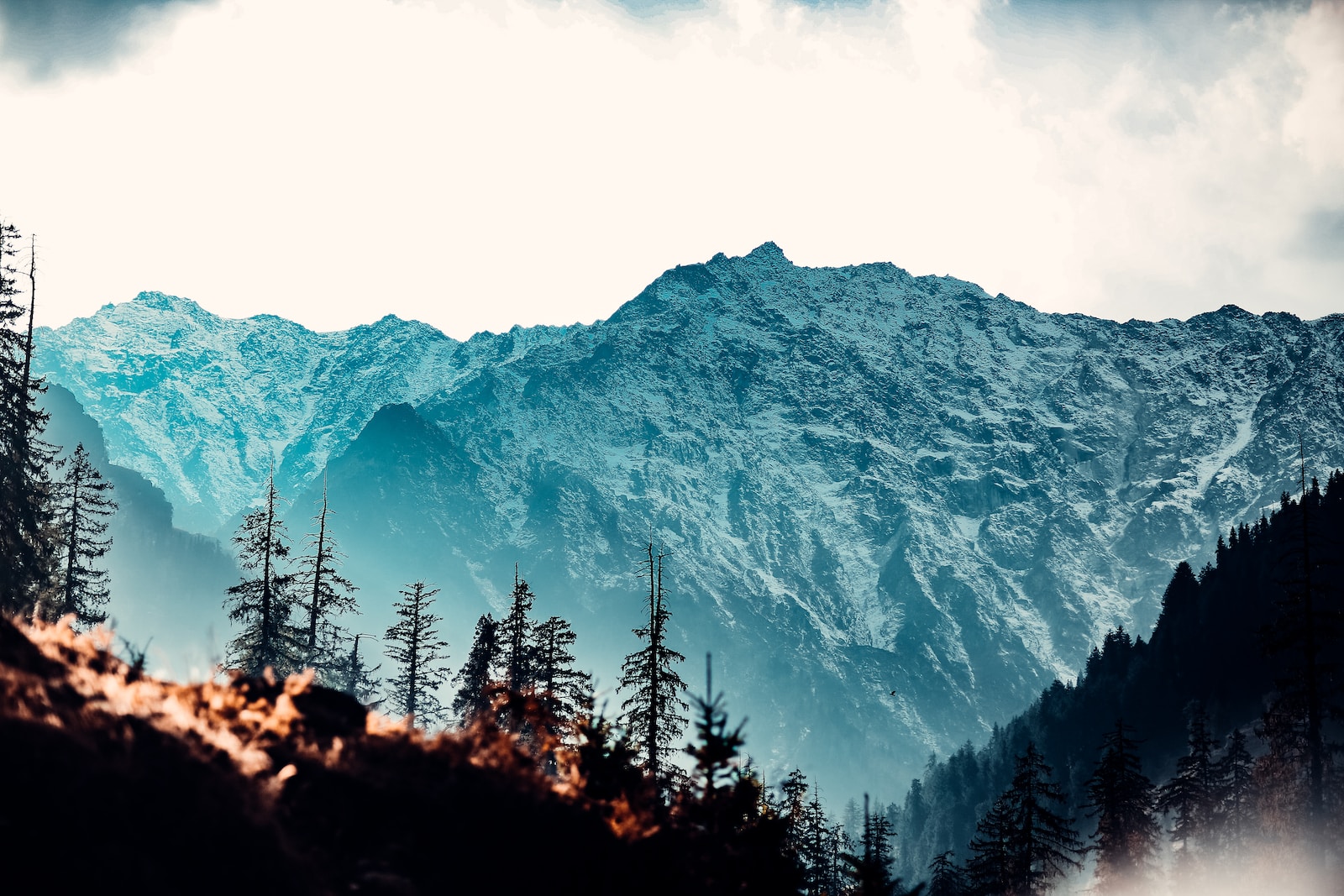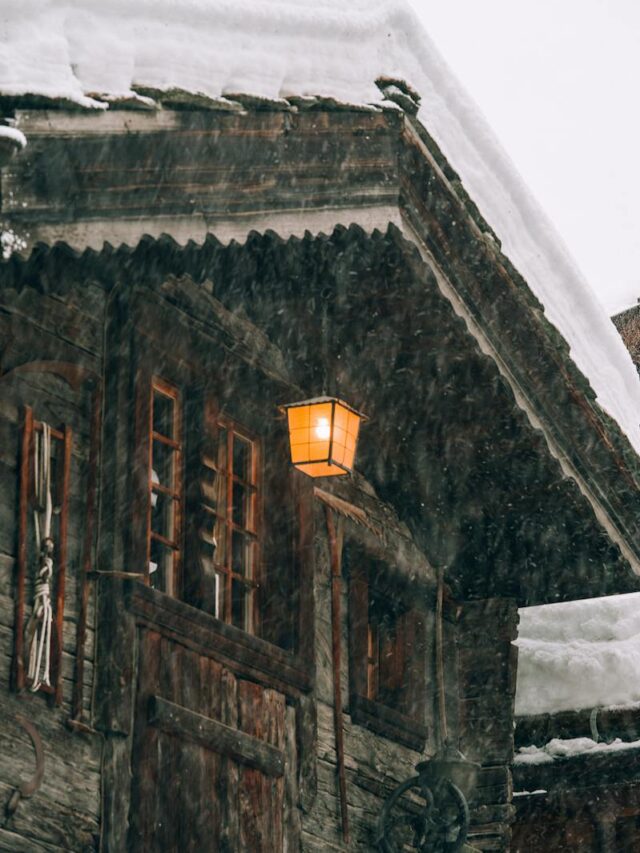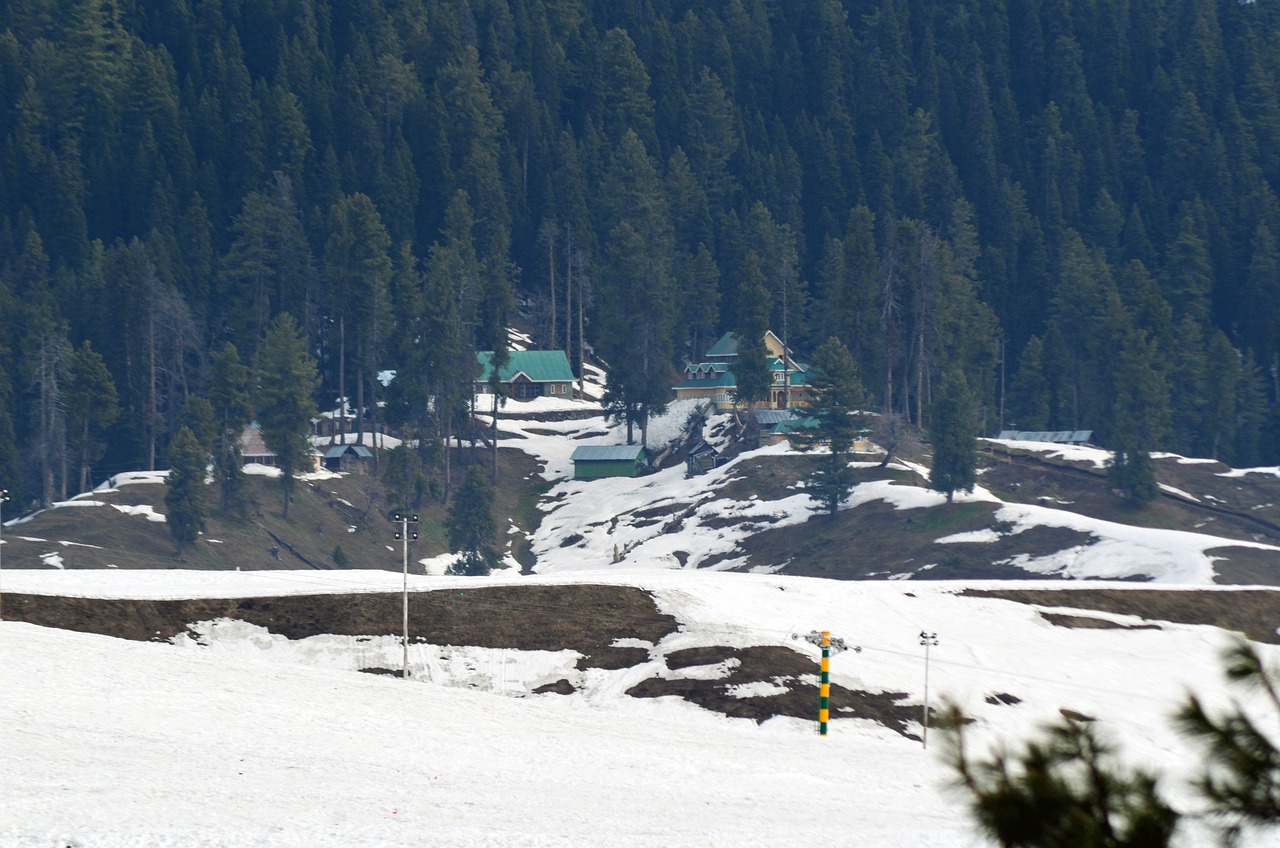|
Getting your Trinity Audio player ready...
|
Positioned in the bosom of the Himalayan and Pir Panjal mountain ranges, the land of Kashmir forms a captivating terrain whose climate is as diverse and enchanting as its scenic landscapes. Unlocking the mysteries of Kashmir’s climatic conditions and their influences paints a comprehensive picture of how geographic aspects, seasonal transitions, and climatic changes shape the area’s ecosystem, agriculture, and tourism. Kashmir’s diverse climate, coupled with its unique geographical location, breathes life into its lush landscapes, fosters exclusive agricultural produces, and creates a variety of seasonal attractions for tourists.
Geographical Location and its Impact
Geographical Location of Kashmir: At the Intersection of Ranges
Kashmir is situated in the northernmost geographical region of the Indian subcontinent. Nestled between the Great Himalayas range and the Pir Panjal range, Kashmir’s prominent topographical features greatly influence its climate. The region’s highest point is at 7,980 meters, exuding climatic characteristics not unlike those found at some of the highest peaks in the world. These twin mountain ranges not only cradle Kashmir but also significantly impact the region’s weather patterns.
Influence of Mountain Ranges on Climate
Being sandwiched between these two mighty mountain ranges, Kashmir is isolated from other regions, leading to its unique microclimate. The annual weather cycle in this region is significantly impacted by the complex interplay of the mountainous terrain and large bodies of water. The ranges effectively block the summer monsoons from reaching the valley, shielding it from the extreme precipitation experienced in other parts of the Indian subcontinent. The result is a climate that’s a mix of continental and oceanic influences, with diverse weather patterns.
Summer and Winter Climate
During summers, the region experiences moderate temperatures, with an average high of around 77°F (25°C) between May and August. This is due to the effects of the high-altitude location, despite being closer to the equator. The higher altitude also means that, even on the hottest days, the nights can be relatively cool.
Winter in Kashmir is a different spectacle altogether. The region is known for its heavy snowfall, which is primarily influenced by Western Disturbances – low-pressure systems originating from the Mediterranean region that cross the Afghanistan-Pakistan region, bringing heavy winter precipitation to the Kashmir valley. The coldest month, January, sees an average temperature of around 37°F (3°C), but temperatures can dip well below freezing, often plummeting to −4°F (−20°C) in the higher elevitudes.
Impact of Geography on Microclimates
Kashmir’s diverse geography contributes to variations in climate within short distances. Some areas at lower elevations and closer to bodies of water like the Jhelum River and Dal Lake have milder climates, while regions at higher elevations experience harsh cold weather and heavy snowfall. The lakes, rivers, and extensive green cover further modulate the temperatures and microclimates across the valley.
Climate Change Effects on Kashmir
Kashmir’s geographical shields have not kept it immune from the effects of global warming and climate change. Rising temperatures, alterations in precipitation, and decreasing snowfall are being attributed to climate change. The warmer temperatures are causing glaciers in the region to melt at faster rates, threatening water supplies and resulting in unusual weather patterns.
Understanding Kashmir’s Climate
Kashmir, cradled between the Himalayan and Pir Panjal ranges, possesses a unique climate heavily influenced by its geographical location. An intricate fusion of high altitude, relative isolation, the interplay of dramatic mountain ranges, large bodies of water, and lush greenery collectively contribute to Kashmir’s distinct and varied climate.
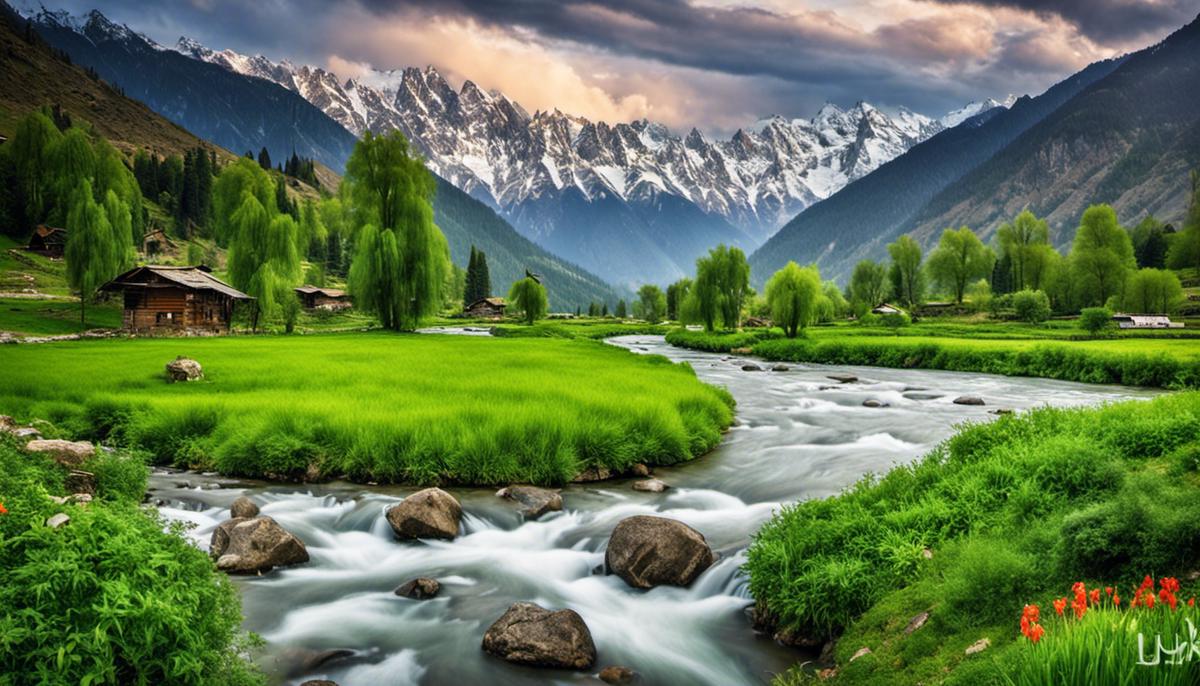
Seasonal Variations in Kashmir Climate
The Climate Cycle: Understanding Kashmir’s Seasons
Spring: The Season of Rebirth
Spring season in Kashmir starts from March and carries on until early May, offering a visual treat for residents and tourists alike. As the harsh winter relents, Kashmir transforms into a vibrant palette of colored flora. Almond, cherry, peach, apple, and pear blossoms, alongside the enchanting narcissus flowers, graciously announce the arrival of spring. Temperatures during this season hover around 15 to 21 degrees Celsius, creating a comfortable climate that kickstarts the tourist season in Kashmir.
Summer Season in Kashmir
Unlike the intense summers experienced in most parts of India, Kashmir’s summer- which lasts from May to August, is moderate and enjoyable. With temperature ranging from 20 to 30 degrees Celsius, the region, blanketed with lush green meadows and vibrant flowers, provides a splendid escape from the heat wave in the plains. This is the most popular season for tourism in Kashmir.
Autumn Season in Kashmir
September heralds the arrival of Autumn, which lasts till November, and it graces Kashmir with a rustic charm. As the leaves turn gold and then russet before falling, the sight is breathtaking. The temperature during the day is mild reaching up to 20 degrees Celcius while nighttime temperatures can drastically drop to around 7 degrees Celsius, serving as a prelude to the harsh winter.
Winter Season in Kashmir
From December to February, Kashmir transforms into a winter wonderland with the onset of heavy snowfall. The region resembles a white painted landscape, a sight that attracts snow enthusiasts from around the world. The mercury hovers around 7 degrees Celsius, but can plummet below zero, particularly during the nights. This season in Kashmir, while breathtakingly beautiful, can also be challenging, due to blocked roads and valleys as a direct result of heavy snowfall.
Kashmir, often referred to as “Paradise on Earth”, is a region known for its diverse and distinctly charming seasons. Irrespective of the season, it manages to captivate tourists all year round with its ever-changing landscapes and diverse climates.
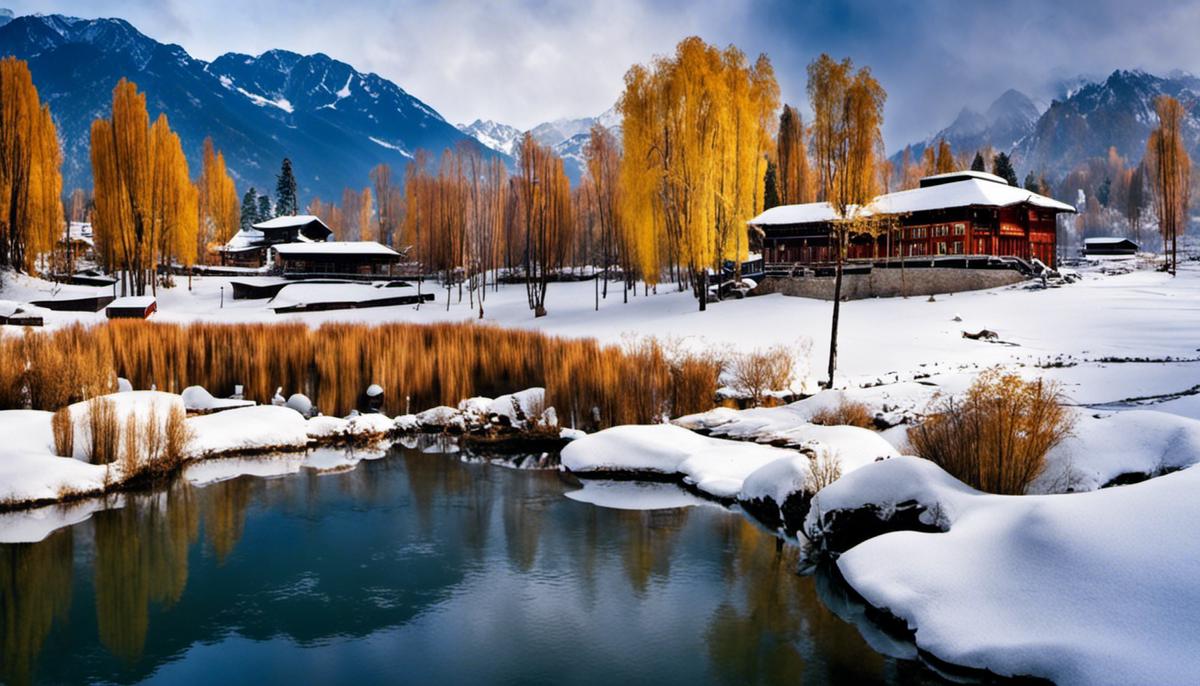
Climate Change and its Impact on Kashmir
Kashmir’s Climate Facing Toll of Global Warming
However, in the past decade, this serene and politically embroiled region nestled between India and Pakistan has been significantly affected by the worldwide impacts of climate change. Visible symptoms of climate change, including concerning trends of escalating temperatures, decreasing snowfalls, and retreating glaciers, along with increased instances of extreme rainfall and consequential floods, are unmistakably reshaping Kashmir’s climate outlook. A situation that presents an ominous future.
Rising Temperatures and Changing Rainfall Patterns
Temperature data over the last century has shown an overall warming trend in the region, with increasing instances of heatwaves during the summer months. Rainfall patterns have also been disturbingly inconsistent, with periods of unusual dryness followed by extreme heavy rainfall causing landslides and flash floods. These variations in climate not only disrupt the normal life but also pose significant threats to agriculture, a primary source of livelihood for many in the region.
Receding Glaciers and Snowfall
In addition to changing the region’s temperature and rainfall patterns, climate change has also associated with a severe decline in snowfall and receding glaciers. This is particularly concerning as the snow and glacial melt are significant contributors to the region’s river systems, which not only supply water to Kashmir Valley but also sustain several downstream regions in Pakistan and India. Persistent ice and snow melt can cause an increase in flooding and subsequently lead to a severe water crisis.
Impacts on Ecosystem and Biodiversity
The changing climate has had catastrophic implications for the local biodiversity and ecosystem of Kashmir, which boasts of unique flora and fauna. Disruptions in the habitats, changes in vegetation patterns, unpredictable weather, and rising temperatures have threatened the survival of several endemic species of the region. There’s an urgent need to mitigate climate change impacts to safeguard the rich biodiversity of the region.
Future Projections and Potential Impacts
Future climate models predict a grim picture for Kashmir with warmer temperatures, less snowfall, and more intense rainfall patterns. The resulting impacts could range from water scarcity due to glacier retreats, increased flood instances, reduced agricultural productivity, and mass displacement of populations from flood-prone areas. Added to this is the potential exacerbation of existing political tensions in the region due to resource scarcity.
Climate change has shown undeniable evidence that demands immediate action. Both global and local responses, including strategies that mitigate greenhouse gas emissions and adaptive measures to cope with already observed climate transformations, are essential in Kashmir. This urgency to intervene stems from the potential environmental, economic, and socio-political crises that could arise in this region. Moreover, the situation emphasizes the need for more localized climate studies and the inclusion of climate risk in the development and planning policies of the region.

Kashmir Climate and its Effect on Agriculture
Kashmir’s Climate: A Distinct Seasonal Tapestry
Best defined as a tapestry of distinct seasons, the climate in Kashmir significantly varies throughout the year. Spring comes alive from March to early May, then folds into a summer stretching from May until late August. The bounty of autumn brings a harvesting season that lasts from September to November, making way for a winter that begins in December and persists till February. Unique to Kashmir’s weather is the heavy snowfall during winter, primarily witnessed in areas of higher elevation.
Climate Impact on Agriculture
Kashmir’s agriculture is shaped largely by its varied climates. The Kashmir Valley, for instance, is famous for its rice cultivation during the warm summer months. Meanwhile, the colder climates in the higher altitudes are suitable for different forms of agriculture, such as horticulture and animal husbandry. Certain unique agricultural practices like cold-water fisheries are also exclusive to this region.
Paddy Cultivation: The Lifeline of Kashmir Valley
Rice, the staple food of Kashmir people, is predominantly harvested during the summer season. The region’s consistent sunlight and abundant water supply make it ideal for paddy cultivation. Changes in climate patterns, however, have been observed to impact the growth cycle of rice. Unseasonal rainfall or untimely snow affects the plantation and yield of this crop, consequently affecting the livelihood of thousands of farmers.
Horticulture: Kashmir’s Fruit Bowl
Kashmir is famously referred to as the “Fruit Bowl of India”, known for its apple orchards, walnut, almond, and cherry trees. The cool climate coupled with well-distinguished seasons makes it ideal for fruit cultivation. However, any major shift in climate patterns tends to affect the fruiting and harvesting periods adversely. Prolonged winter or delayed spring can lead to a decrease in fruit production, impacting both the local economy and supply chains for these highly sought-after fruits.
Saffron Cultivation: Kashmir’s Golden Crop
Kashmir’s cold, dry climate nurtures another unique produce – saffron, commonly known as Kashmir’s “Golden Crop”. This spice, one of the most expensive in the world, is cultivated in the autumn. Extreme weather conditions such as heavy or untimely rainfall impact the growth and quality of saffron, reducing its global competitive ability.
Animal Husbandry and Cold Water Fisheries: Capitalizing on the Cold
The higher altitude regions of Kashmir, which are unsuitable for most cultivation, support animal husbandry. The harsh winters provide excellent conditions for rearing certain sheep breeds, such as the Kashmiri Pashmina goat. Similarly, the cold glacial waters are perfect for certain niche industries like cold-water fisheries, yielding trout – a specialty of the region. Extreme winter conditions, however, make fodder and water sources scarce, posing challenges to sustainable livestock.
Kashmir, a region often hailed as ‘Paradise on Earth,’ has a climate that fosters a diverse array of agricultural practices. However, this delicate balance is quickly descending into uncertainty. There’s a growing challenge as climate conditions become increasingly volatile, threatening the stability of these sensitive ecosystems and increasing concern for local farmers.
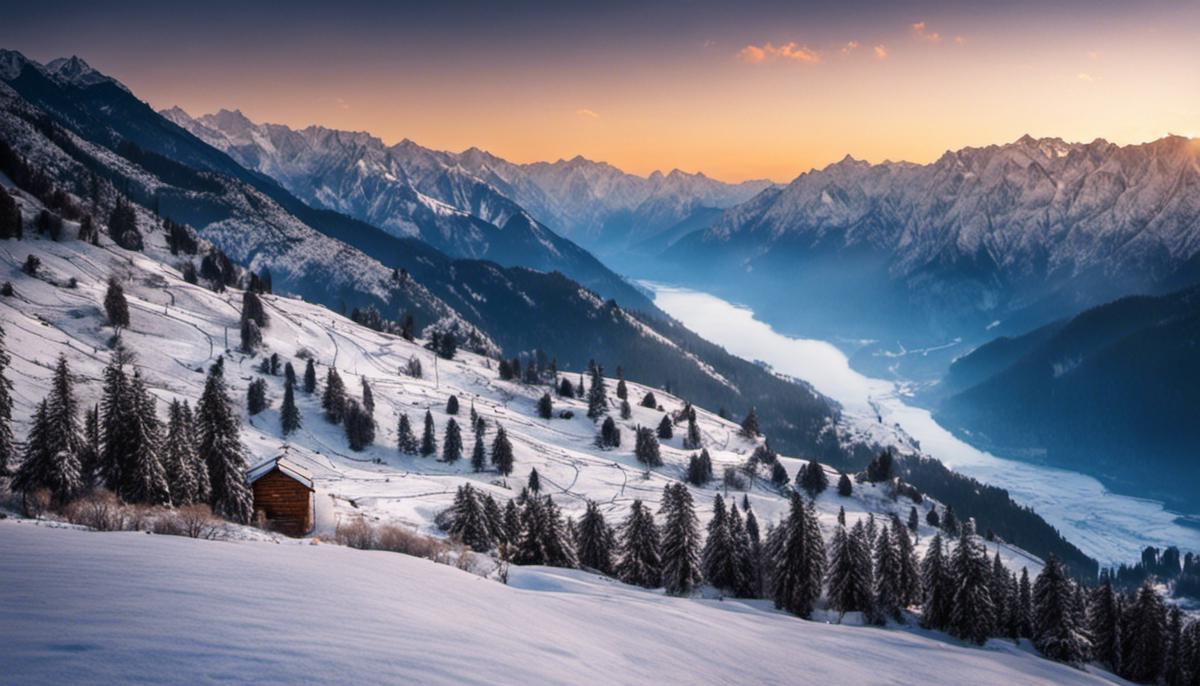
How Kashmir’s Climate Affects Tourism
Understanding the Climate of Kashmir
In more detail, Kashmir’s temperate climate sees the average annual temperature ranging between a chilly 6 degrees Celsius and a warm 20 degrees Celsius. This climatic landscape is divided into four distinct seasons. Each season unfolds with its own charm: the refreshing bloom of spring spans from March through early May, summer extends from early May to August, a colourful fall takes place in September and October, concluding with the invigorating winter from November through February.
Impact of Climate on Tourism
Kashmir’s climate is an influential factor that affects its celebrated tourist industry. Tourist influx in Kashmir corresponds positively with the seasons and weather patterns. During the summer, when temperatures in the rest of India rise considerably, Kashmir’s pleasant weather provides a welcome respite. Its lush green meadows and flowering orchards attract a considerable number of tourists. Additionally, adventure enthusiasts are drawn to opportunities for trekking, river rafting, rock climbing, and other outdoor activities during this period.
Conversely, in winter, Kashmir is transformed into a winter wonderland with heavy snowfall. This attracts a different set of tourists interested in engaging in snow-related activities such as skiing, ice-skating, and snowboarding. Major tourist destinations like Gulmarg, Sonmarg, and Pahalgam are renowned for their winter sports and enchanting snowscapes.
Climate Changes and Effects on Attractions
However, tourist visits are not as common during the harsh winter and the monsoon-ridden parts of the year, impacting the overall visitor counts. Srinagar’s famous Dal Lake, which is usually bustling with shikara (traditional wooden boat) rides during the summer, freezes over in winter, reducing watersport-related activities.
In the past few years, unexpected and severe climate changes have led to disruptions in tourism. Frequent landslides, triggered by torrential rains or snowfall, have hampered the accessibility to popular tourist sites and adventure destinations. Prolonged winter seasons or untimely, excessive snowfall can trap tourists and cause vacation plans to go awry.
Best Time to Visit Kashmir
For those seeking to enjoy Kashmir’s natural beauty at its peak, the months of March to October are considered the best. The valley blossoms with vibrant colors during spring, and in autumn, the Chinar trees take on a fiery hue. Summer months offer pleasant weather and an escape from the heat in other parts of India. Tourists seeking snowfall and winter sports should consider visiting between late November and February.
Kashmir’s climate, while being one of the region’s most attractive features, also presents challenges to its tourism industry. Predicting weather changes, providing adequate infrastructure, ensuring tourists’ safety during extreme weather, and maintaining the region’s ecological balance are ongoing concerns for the area.
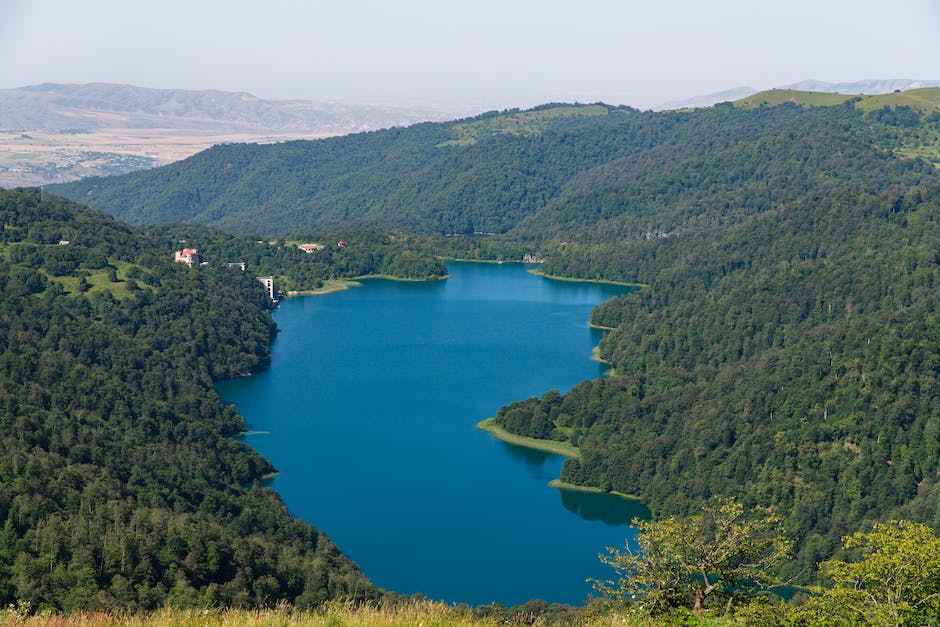
The nexus between Kashmir’s climate and its socio-economic aspects is both profound and interwoven. With each turning season, the region dons a new aura, thereby affecting agriculture and transforming the tourism industry’s dynamics. However, the looming threats of climate change could potentially stress the region’s ecosystem and people, thereby calling for effective mitigation strategies. The future of Kashmir’s agriculture and tourism heavily depends on how well we can preserve this climatic diversity, protect its beautiful landscapes, and adapt to future impacts of climate change. As we continue to explore these themes, it becomes ever more apparent that Kashmir’s climate is not simply an aspect of weather patterns, but a crucial narrative that shapes the region’s culture, lifestyle, and economy.
Elevate your website’s content with Writio, the advanced AI writing assistant. This article was effortlessly crafted by Writio’s intelligent algorithms.








